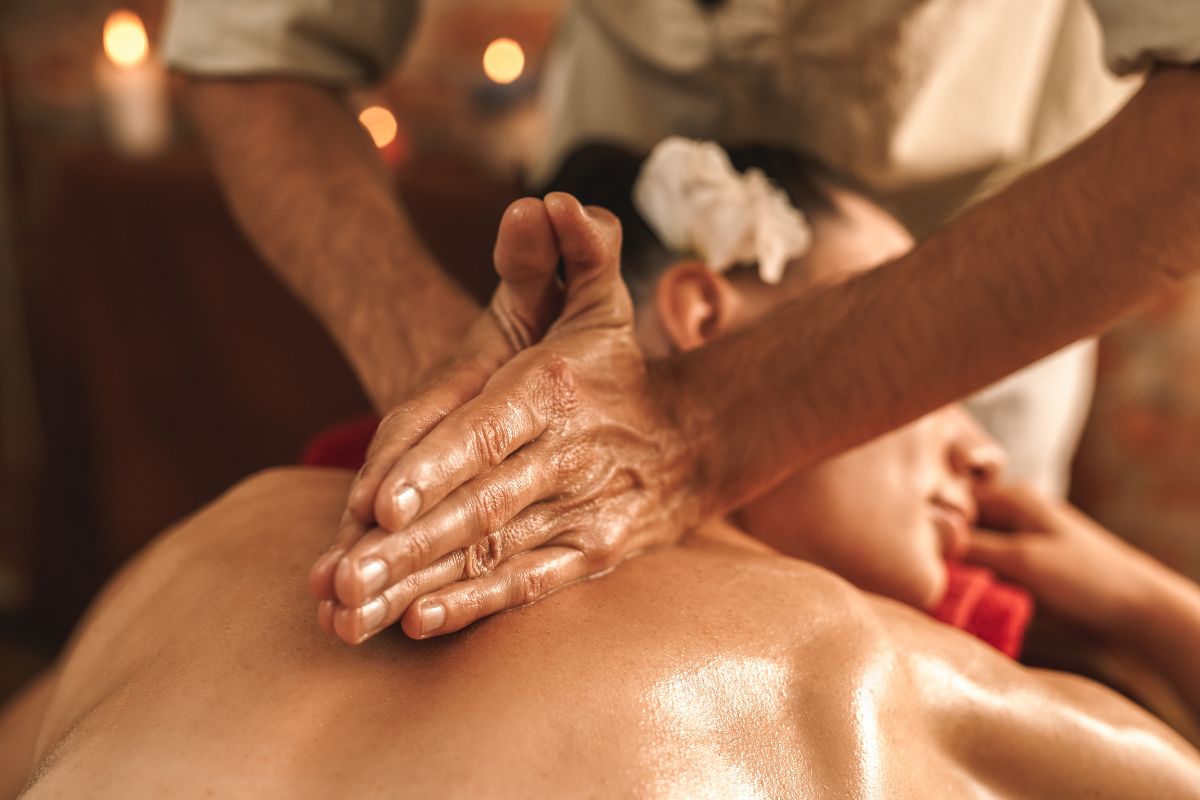Ayurvedic Massage: A Traditional Therapy for Better Sleep

Have you ever heard of Ayurvedic massage and wondered what all the fuss is about? You’re in good company. Over the last few years, more and more Brits have been giving it a try—whether they’re desperate to ease a nagging backache, chase away stress, or simply steal a quiet hour for themselves.
If you’re curious but don’t know where to begin, stick around. I’ll share a bit of background on this ancient practice, talk you through what actually happens during a session, and explain why it’s become such a hit across the UK.
Table of Contents
ToggleA Little History
Ayurvedic massage springs from Ayurveda, India’s age-old “science of life.” Think of it as a holistic roadmap that’s been around for thousands of years, guiding people toward balance in body, mind, and spirit. Unlike your run-of-the-mill spa rubdown, Ayurvedic massage isn’t just about kneading out knots—it’s a full-body tune-up meant to leave you feeling grounded and, often, a lot calmer.
What Makes It Different?
For starters, oil. Lots of oil. The therapist pours warm, herb-infused oil all over you, then works it into your muscles using strokes tailored to your body’s unique needs. Whereas a Swedish or deep-tissue massage might zero in on problem spots, Ayurveda views you as a whole system. It’s equal parts physical pampering and mental decompression.
Which Version Suits You?
There isn’t just one “Ayurvedic massage” in Ayurvedic treatments—there are several, each with its own flavour:
- Abhyanga: The most popular choice here in Britain. Picture slow, rhythmic strokes with warm herbal oil. Perfect if you’ve been burning the candle at both ends or struggling with sleep.
- Shirodhara: Ever fancied a gentle river of oil flowing across your forehead? This one’s brilliant for clearing a foggy mind—many people swear it sharpens focus and soothes anxiety.
- Pizhichil: This is an all-over-body oil bath, literally drenched in warm herbal oils. It’s fantastic for stiff joints or anyone who craves total-body warmth.
- Marma Therapy: Think of this as acupuncture without needles. The therapist applies pressure to key energy points to kickstart circulation and shift stagnant energy.
Depending on the spa or clinic—whether you’re in London, Manchester or Birmingham—you might find all these options, or just a couple. Always worth checking with the therapist what they specialise in.
Ayurvedic Oils
In Ayurveda, there are three main “doshas” (body-mind types): Vata, Pitta, and Kapha. Your therapist will ask you a few questions—about how you sleep, handle stress, things like that—to figure out which dosha is most dominant. Then they’ll pick an oil blend to match:
- Sesame oil: A dry-skin hero, especially soothing if you’re a Vata type.
- Coconut oil: Cooling and light, excellent for fiery Pitta constitutions.
- Mustard oil: Warming and stimulating—Kapha types often love this one.
- Brahmi oil: Great for melting away stress and nudging you toward dreamland.
- Ashwagandha oil: A pick-me-up for tired limbs and flagging spirits.
What To Expect In A Session
- Chat time: You’ll settle in and have a quick natter—health history, lifestyle habits, your current aches and pains, that sort of thing.
- Ayurvedic Oil selection: Therapist makes their pick (and you can ask questions).
- The massage itself: You’ll lie down (clothed in loose shorts or under-sheet), the oil gets warmed, and then the real magic begins—long, fluid strokes mixed with firmer presses. Sometimes they’ll give extra attention to your head, feet, or hands.
- Recovery: After the main event, you’ll be left to rest, often wrapped in a warm blanket to let the oil soak in.
- Aftercare: Wipe off any excess oil, maybe enjoy a herbal tea. Drinking water afterwards is a must.
Why So Many Of Us Are Hooked
- Deep relaxation. Between the heat, the oil, and the soothing strokes, stress really melts away.
- Sleep boost. Insomnia sufferers report marked improvements after just a few sessions.
- Pain relief. Whether it’s nagging muscle tension or arthritic joints, many find notable ease.
- Circulation kick-start. Those sweeping strokes actually help blood flow, leaving you with a healthy glow.
- Mind-massage combo. Techniques like Shirodhara are top-tier at quieting a busy mind.
Remember, this isn’t a replacement for your doctor—more of a complementary option. A lot of folks incorporate it into their regular wellness routine.
Finding A Therapist
In most major UK cities—London, Manchester, Birmingham, even Leicester—you’ll find clinics and yoga retreats offering Ayurvedic treatments. When you book, be sure to ask:
- What are the therapist’s credentials? (Many train in India or under senior Ayurvedic experts.)
- Which massage types do they specialise in?
- How much does a session cost?
- Can they share client testimonials?
Some therapists are backed by the Ayurvedic Professionals Association UK, which can offer extra peace of mind.
Rough Costs
- 60-minute Abhyanga: £45–£70
- 90-minute session: £70–£100
- Shirodhara or speciality treatments: Often at the top end or a bit beyond
Package deals are common if you commit to multiple sessions.
Who Should Sit This One Out?
While it’s generally safe, you might want to hold off if you have:
- A fever or active infection
- Open wounds or severe skin conditions
- Pregnancy (always get the green light from your midwife or GP)
- Serious medical issues—best to check in with your doctor first
A Few Handy Tips
- Wear clothes that’re easy to slip on and off.
- Skip a heavy meal right before your appointment—a light snack will do.
- Plan a chilled activity afterward—no rush to tackle your inbox.
- Stay hydrated post-massage and speak up if you feel too hot or cold during the treatment.
Parting Thoughts
Ayurvedic massage is more than just a treat—it’s a time-honoured ritual that marries the physical with the mental. For centuries, people have turned to it for balance, peace, and a bit of self-care. If you’re craving relief from stress, stiffness, or just the daily grind, why not give it a go? You might just walk out feeling like a lighter, brighter version of yourself.
Published by Amanda Mills
I'm Amanda Mills, Senior Content Strategist, and I've been shaping digital marketing narratives since 2011. With a master’s degree in Digital Marketing and a bachelor’s in Media Studies, I specialize in blending creative storytelling with data-driven strategy to create content that not only engages but delivers results. View more posts







